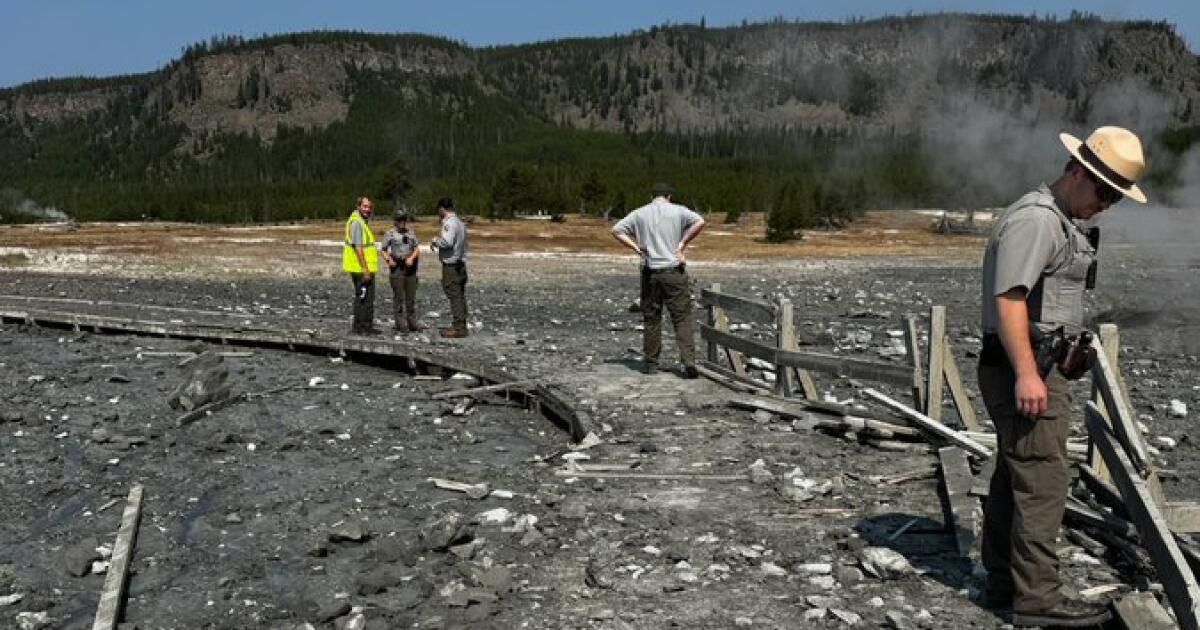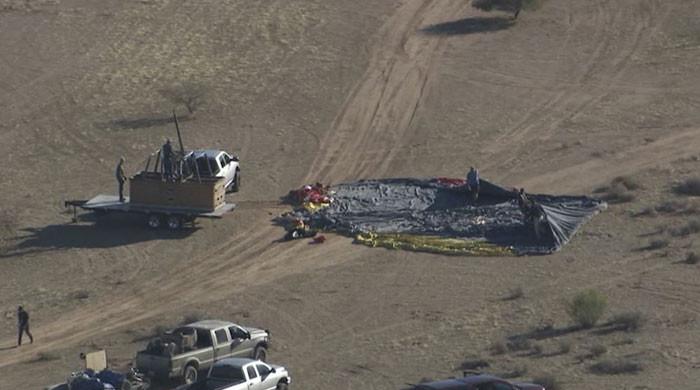A violent hydrothermal explosion at Yellowstone National Park sent visitors fleeing Tuesday as mud and debris erupted from a geyser just north of Old Faithful, according to park rangers.
Video of the explosion showed a plume of steam and dark dirt rising into the sky. “Run, run, run, run…” a woman screamed as park visitors began running along a wooden walkway.
A boardwalk in Yellowstone National Park reveals the aftermath of a violent geyser explosion.
(National Park Service)
The explosion occurred around 10:19 a.m. near Sapphire Pool in Biscuit Basin, just north of Old Faithful Geyser, the park service said in a news release. No injuries have been reported, but the event is still under investigation.
Hydrothermal explosions occur when “water suddenly turns into steam underground,” according to a statement from the U.S. Geological Survey. The agency said such explosions are “relatively common” in the park.
“This type of event probably happens once or twice a year in Yellowstone,” said Michael Poland, the scientist in charge of the USGS Yellowstone Volcano Observatory, “often in rural areas where it would go unnoticed.”
The last explosion at Biscuit Basin was on May 17, 2009.
Yellowstone sits atop a maze of hydrothermal vents, filled with hot water and steam. The explosion was likely caused by minerals clogging one of the underground vents, Poland said, where pressure built up until it exploded.
Predicting such phenomena is extremely difficult, Poland said. The process of water turning into steam can occur “instantly.” Even with seismic sensors right above the site of the explosion, “it’s not clear if there would be any signal.”
The Park Service and the U.S. Geological Survey plan to investigate whether the explosion disturbed the underground system. Scientists will measure the chemical composition, temperature and other properties of nearby geysers and vents, and earthquake scientists at the University of Utah will deploy sensors to measure any residual noise.
The park can then determine if the area is safe to reopen to visitors.
“No other monitoring data show any changes in the Yellowstone region,” the park service said. “Today’s eruption does not reflect a change in the volcanic system, which remains at normal levels of activity.”
The park, known for Old Faithful Geyser and others, sits atop an active volcano. The last lava eruption from the Yellowstone caldera, or Yellowstone supervolcano, occurred about 70,000 years ago, according to the U.S. Geological Survey.
“If it was magma rising from beneath the ground, we would see really dramatic changes,” Poland said. “There would be a lot of earthquakes and deformations in the ground. There wouldn’t be one formation that had an explosion, there would be changes everywhere.”
Newsletter
You are reading Boiling Point
Sammy Roth keeps you up to date on climate change, energy and the environment. Sign up to receive it in your inbox twice a week.
You may occasionally receive promotional content from the Los Angeles Times.












